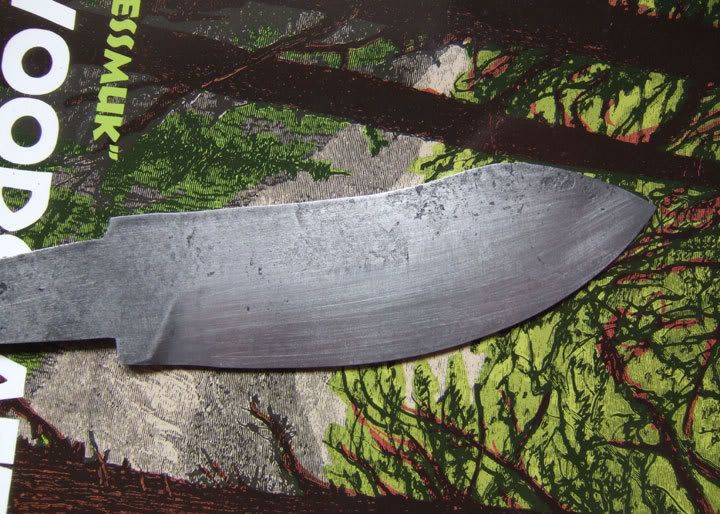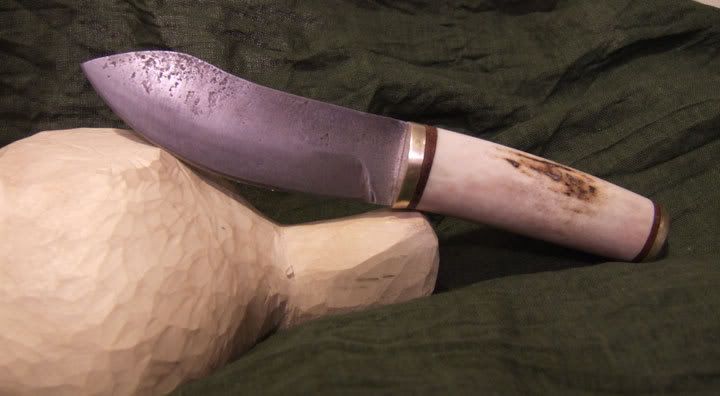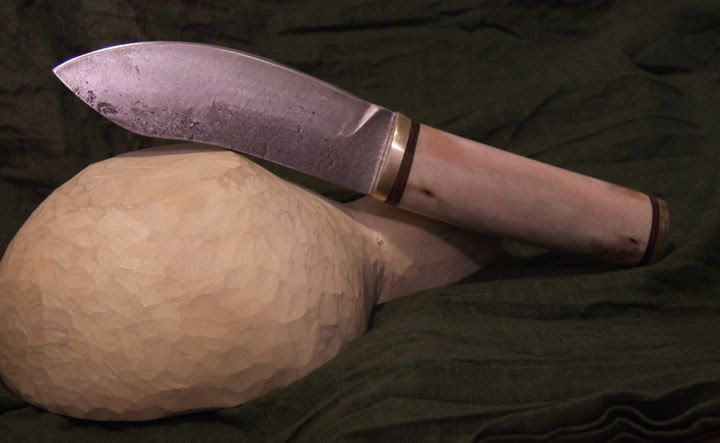Okay, here goes.
Nessmuk goes on at length about his axe, canoe, fishing equipment and numerous other things yet not is knife. He simply mentions what it is to be used for and that it ought be thin. You could deduce from this that it was function over form.
Through hsis life Nessmuk would have seen a boom in the cutlery producing industry. Restrictions on import of British knives through the civil war (1861-5) led to the birth of the US cutlery industry. There was probably a lot of knives to choose from and this could have been simply one companies pattern. Not too likely, but possible.
Nessmuk's kit is not really that of a bushcrafter. He essentially was a lightweight hunter and all of the stories contain a lot of hunting and fishing references. Skinning and butchery were therefore far more important to him than to the majority of us. He needed a butchers knife for butchery and kitchen work not for carving wood.
Nessmuk mentions his axe for cutting wood and a folding knife for whittling - there aren't really a lot of mentions of heavy duty knife work in his book either so in all probability it didn't need a Scandi edge. Scandi grinds may rule on wood (o.k. British red? ;-) but a kitchen or butcher's knife is more likely ot be flat ground with, perhaps, the final edge bevel slightly convex from free hand sharpening and stropping.
One of the biggest cutlery manufacturers in the 19th century US was green River - who continue to this day. They were making outdoors blades with their stamp from 1837 (according to the internet that is) if you look at a green river sheep skinner there is a degree of similarity - it wouldn't take too much time to turn one knife into the other - there is a tutorial over on British Blades doing something similar. It doesn't quite have that distinctive S-shape.
The final option, when thinking on the S-shape, is that the knife was perhaps a forerunner or earlier ancestor of the DH Russell/ Grohmann tyoe belt knife. They both have the constantly curved leaf shaped blade, with a point. Both also feature an offset or kinked handle which gives finger clearance and both are thin blades. Finally they both have a fair connection to canoeing.
Sorry to go on, not really a lot of facts but I hope it is food for thought.
 . I ground down the spine to put a point on it but it still needs a little more work to fine tune the shape again. I'll probably temper it tonight.
. I ground down the spine to put a point on it but it still needs a little more work to fine tune the shape again. I'll probably temper it tonight.



